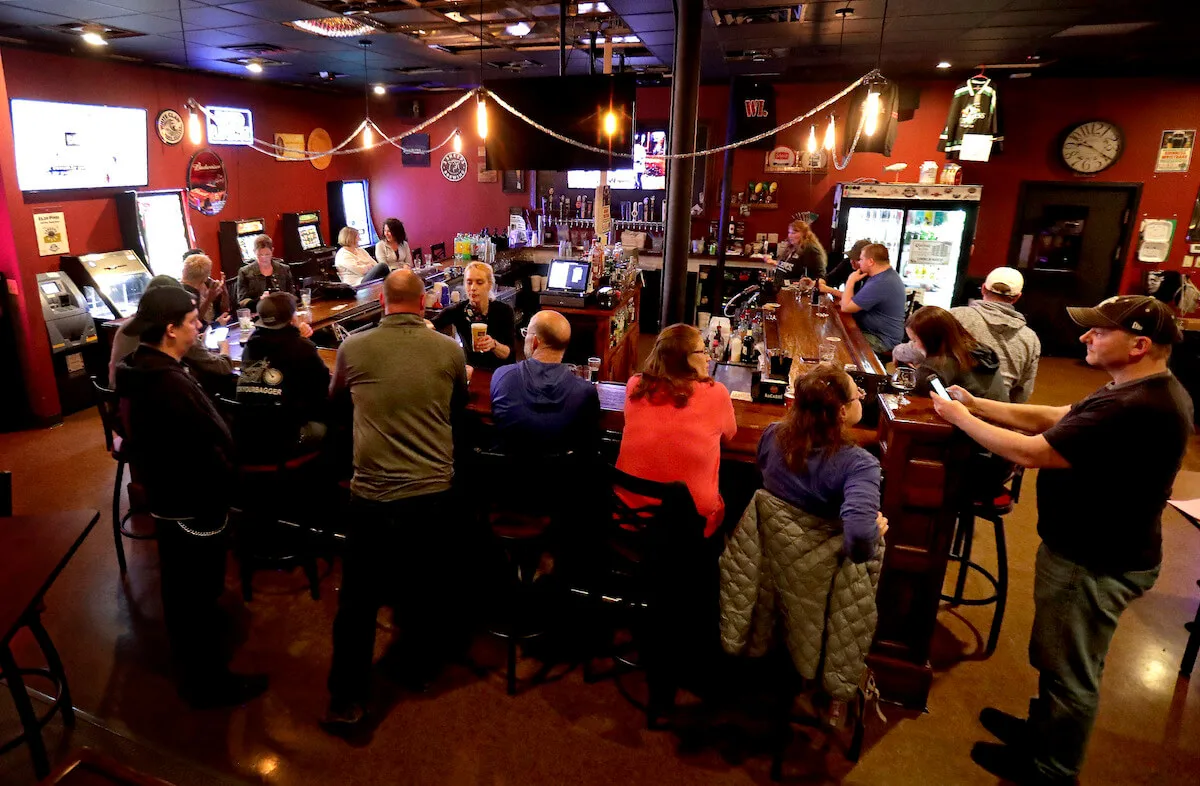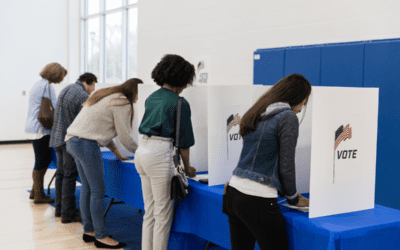
#image_title
Gov. Evers’ DHS Secretary wants to issue new capacity limits on businesses, but asks justices to rule on how much she can do without a still-absent Legislature.
The Department of Health Services on Thursday asked the Wisconsin Supreme Court to let it issue new business capacity limits to slow the spread of the coronavirus.
A decision in favor of DHS would restore powers stripped from the department in the conservative-controlled court’s May decision to strike down the statewide Safer at Home order. The arguments in the case, Tavern League of Wisconsin v. Andrea Palm, centered on whether DHS Secretary-designee Andrea Palm’s October order to limit indoor business capacities was illegal under the conservative-controlled court’s Safer at Home decision.
Citing the May decision, an appeals court panel killed the capacity limit order last month on the day it expired. Palm brought the case to the Supreme Court to get a final say from the most powerful judges in the state and because she wants to issue a new 28-day capacity limit on bars, restaurants, and other places where gatherings have spread COVID-19. There are currently no statewide capacity limits, only local orders in a handful of cities and counties.
“Secretary-designee Palm has attested that DHS wishes to issue Emergency Order 4 as soon as possible, but believes they could not currently do so given the court of appeals’ holding; should this Court reverse that holding, DHS would issue the order,” DHS wrote in a November filing.
Misha Tseytlin, the attorney representing small businesses that sued to overturn the capacity limit, argued Palm only brought the case to the high court because she saw the current court’s composition as more DHS-friendly than it was in May. Liberal Justice Jill Karofsky unseated conservative Dan Kelly in the April election and was sworn in Aug. 1, whittling the court’s conservative majority to 4-3.
“The same agency in the same pandemic is trying to get this court to take another bite of the apple, frankly cynically, because my friends believe the composition of this court has changed,” Tseytlin said.
Liberal justices Ann Walsh Bradley and Rebecca Dallet said contradictions within the Safer at Home decision itself opened the door for further ruling.
“[Legislature v.] Palm is internally inconsistent. That’s why we’re here today,” Dallet said of the May decision.
Under state law, DHS “may close schools and forbid public gatherings in schools, churches, and other places to control outbreaks and epidemics,” and the department “may authorize and implement all emergency measures necessary to control communicable diseases.”
The May Safer at Home decision, authored by conservative Chief Justice Pat Roggensack, said those powers are subject to the legislative rulemaking process, meaning DHS secretaries would have to get approval from lawmakers to implement long-term pandemic restrictions.
However, Roggensack without explanation upheld DHS’ ability to unilaterally close schools and said the department didn’t need to go through rulemaking for that purpose, a puzzling contradiction. Because there was no reasoning provided for schools’ exemption from the decision, it left open the question of what other sorts of DHS orders might withstand the court.
“Things like capacity limitations and numerical limitations are a natural way to carry out the legislative mandate to the situation at hand,” said Assistant Attorney General Colin Hector, who presented arguments for DHS.
Tseytlin said the way Palm’s capacity limit order targeted businesses like restaurants, bars, and stores, was at odds with the Safer at Home ruling because it was a “subjective, policy-based decision.” It would have been legal for DHS to issue a blanket order outright banning all public gatherings, Tseytlin said.
Hector argued that if state lawmakers had intended for DHS to have such “on-off switch” powers, the law would have explicitly provided that authority.
Conservative Justice Brian Hagedorn, a swing vote, sided with the court’s liberal minority in defense of the Safer at Home order. If he again breaks from his fellow conservative justices, DHS would presumably win the case, provided the three liberal justices vote as expected.
But Hagedorn appeared to be leaning toward siding against DHS, citing the Safer at Home decision—not because he agreed with it, but because it now serves as legal precedent.
“To turn on that [precedent] now would be to undercut many of the principles that we’ve laid out in the way we conduct ourselves as an institution,” Hagedorn said.
Dallet and Bradley similarly expressed discomfort with the possibility of overruling precedent, but they said the Safer at Home decision’s discrepancies were worth parsing out in this case.
The court gave no indication of when it may issue a ruling, but Roggensack scheduled a closed session for Thursday afternoon, indicating a decision may come sooner than later.
The Tavern League of Wisconsin and Sawyer County Tavern League originally filed the lawsuit against Palm’s order, but they declined to appeal a circuit court judge’s decision to uphold the order. The Mix Up, a bar in Polk County, and Pro Life Wisconsin appealed, and a three-judge panel ultimately nixed the order, pending the results of this appeal.

Opinion: Many to thank in fair maps victory for Wisconsinites
On February 19, 2024, Governor Tony Evers signed into law new and fair state legislative maps, bringing hope for an end to over a decade of...

Opinion: Empowering educators: A call for negotiation rights in Wisconsin
This week marks “Public Schools Week,” highlighting the dedication of teachers, paras, custodians, secretaries and others who collaborate with...

Op-ed: Trump’s journey from hosting The Apprentice to being the biggest loser
Leading up to the 2016 election, Donald Trump crafted an image of himself as a successful businessman and a winner. But in reality, Trump has a long...

Not just abortion: IVF ruling next phase in the right’s war on reproductive freedom
Nearly two years after the US Supreme Court overturned Roe v. Wade, another court is using that ruling to go after one of the anti-abortion right’s...




